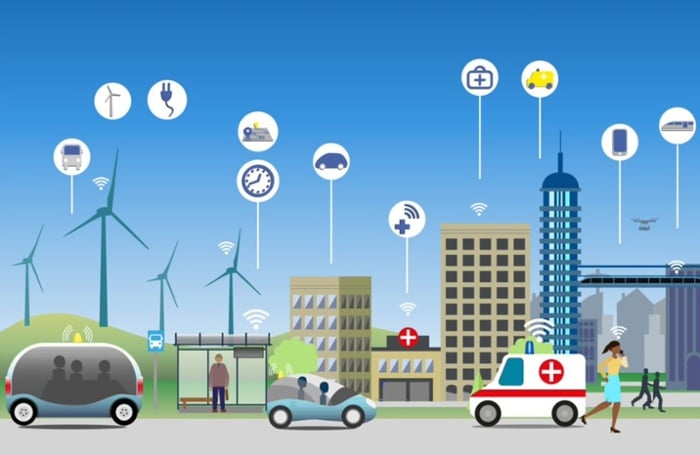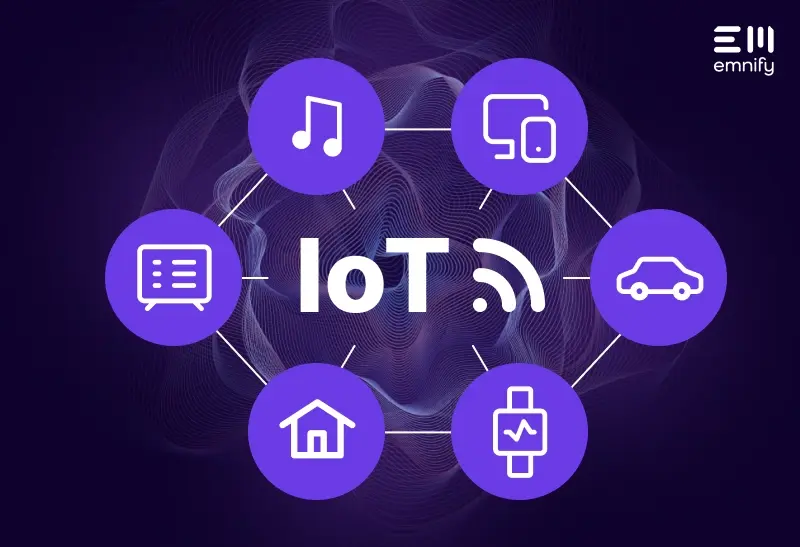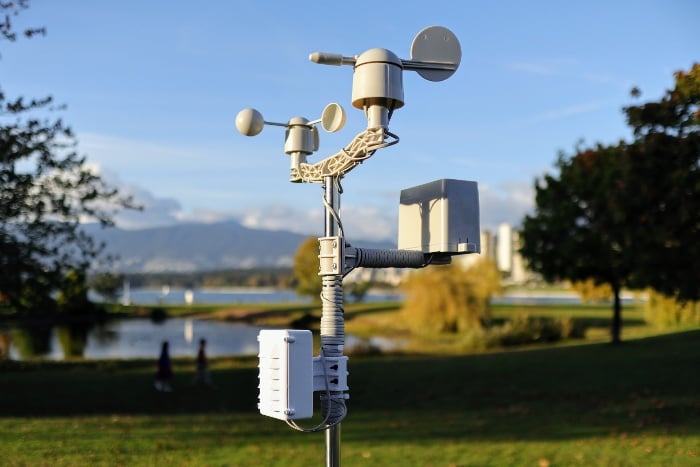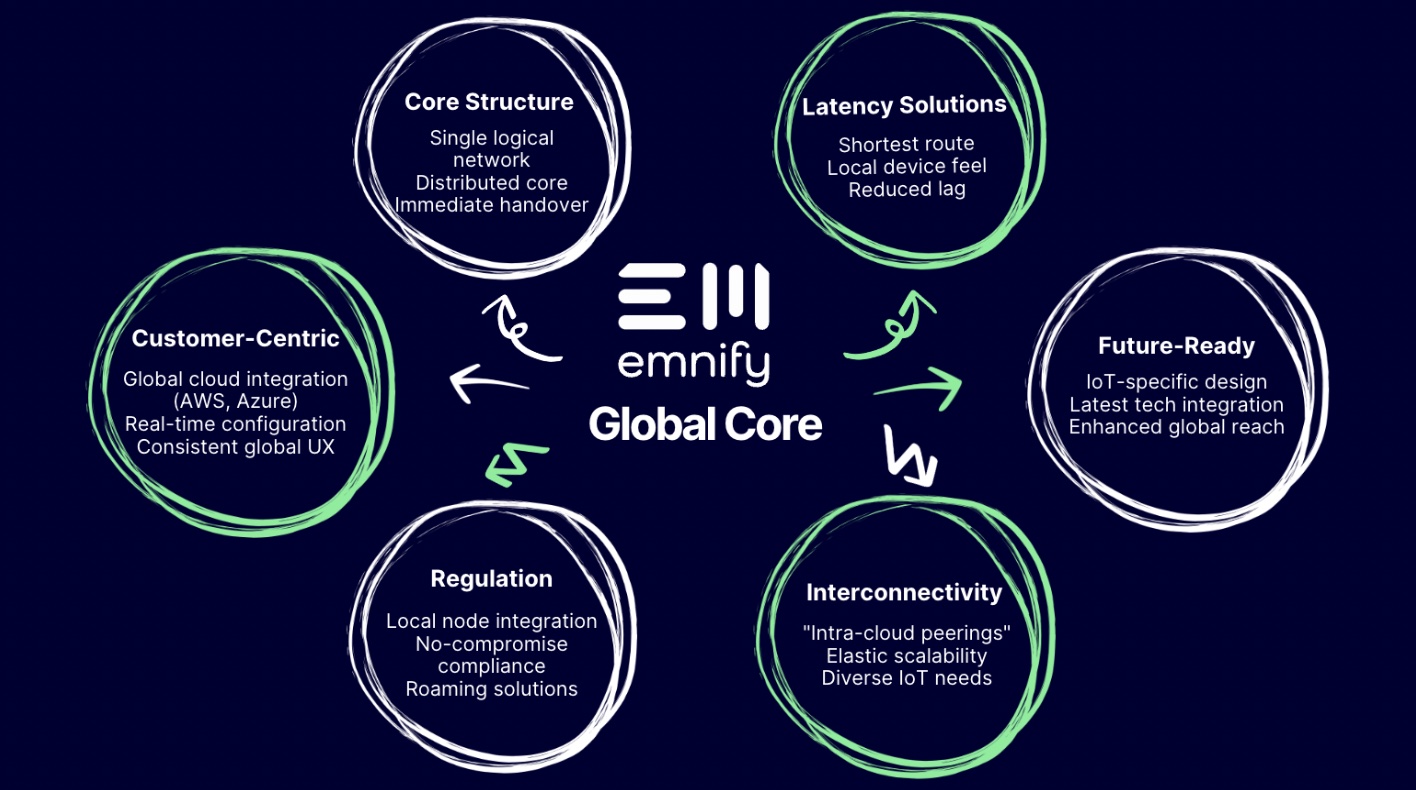

This matters to you because ...
In IoT, every connection matters. Without a connection, there’s no data. Whether you’re scaling your operations, entering new markets, or seeking optimal performance, you need a network that understands the unique challenges of IoT. Our next-gen mobile core network does just that—it’s designed for the global spread of IoT, ensuring devices feel local, no matter where they are.
emnify has stepped beyond industry constraints by embracing a ‘greenfield’ approach: bringing to life a globally distributed, scalable, cloud-based core network that scales with your business.
As creators, innovation is part of our DNA. In 2014, emnify was the first to run a mobile core network in the cloud on Amazon Web Services (AWS). And we are still pushing boundaries today.
From one device to billions: Why traditional networks don’t cut it for IoT
Traditional telecommunications were built around mobile phones. But IoT? That’s a world where devices outnumber people, spread across the globe, and demand always-on connectivity. These aren’t your everyday cellphones, and they need a network that understands their unique needs.
Imagine an IoT setup where your device in Europe communicates seamlessly—as if it’s right next to its server in the USA—without any lag time. We’ve built our core network infrastructure from scratch; taking a fresh, unbiased approach to ensure that wherever your IoT devices are, they always feel local.
The result? Reduced latency, a better user experience, and a truly global reach—without the fuss of traditional networks.
Why traditional networks might be slowing business down
Traditional networks operate like a centralized warehouse: all data returns to a main hub before going elsewhere. While this works for typical mobile users who don’t travel much, it’s not efficient for global businesses, especially in the IoT sector, as this can translate to delays.
Consider this hypothetical example: a network operator is based in Europe, with agreements spanning the globe. When data from a device in Australia wants to communicate with this operator’s server, it first takes a 14,000-kilometer detour back to Europe. That’s like flying from Sydney to London—just to send a postcard to Singapore.
This results in a latency of up to 350ms—a considerable delay that can disrupt operations and user experience. In contrast, with emnify’s nearest regional breakout in Singapore, latency is reduced by approximately 250ms, greatly enhancing the user experience and system efficiency. As emnify continues to expand our SuperNetwork, this latency speed will decrease even further.
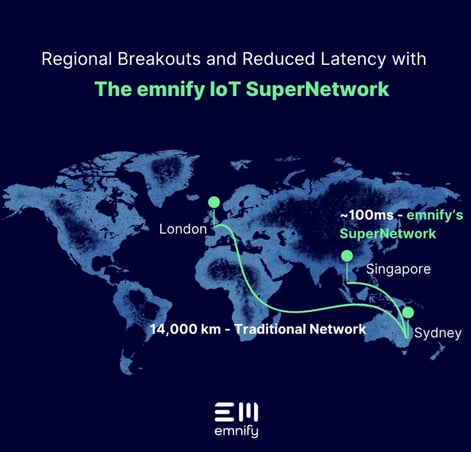
When the distance to the application server is far from the device, the data packets are forced to travel from the device to the application and the inefficiency becomes more pronounced. This kind of latency is a significant problem—it impacts the battery lifetime, the user experience and performance metrics.
Let’s put it in real-world terms. Suppose you’re a car manufacturer in Germany, selling your cars worldwide. Each car has a SIM card, providing a range of services to drivers. A driver in Spain shouldn't have to wait because the car’s data is taking a round trip to Germany.
In traditional networks, a Spanish driver might experience latency as the data packets are routed all the way to Germany before reaching their destination. However, emnify's SuperNetwork platform provides local breakouts and assigns local Spanish IP addresses, achieving two key benefits. First, it minimizes data latency. Second, it ensures that the customer is treated as a local user in multiple dimensions—ranging from content availability to regulatory compliance.
To explain further, a person with a local Spanish IP will be able to access content available to Netflix users in Spain and be subject to Spain’s local regulations, law enforcement, and possibly even content moderation or censorship. The same would apply to our car—while the car and its model remain the same, the user experience becomes significantly localized and improved.
It’s worth noting that while many traditional network operators do their best within their home countries, their hands are tied when it comes to international services. They are like local experts who struggle when asked to operate on a global scale. In the evolving world of IoT, where devices can be anywhere and everywhere, it’s crucial to move beyond this ‘old world’ paradigm and embrace a network designed for today's challenges.
emnify’s SuperNetwork: Addressing bottlenecks, one node at a time
Latency and inefficient routing can hamstring your IoT operations. With emnify, these challenges become a thing of the past. Our global SuperNetwork is a single logical network with nodes distributed worldwide, ensuring data takes the shortest route possible.
Our single distributed core ensures a uniform, seamless global experience that’s unrivaled in the industry. Wherever your devices are, they are always handled locally, maintaining a consistent network experience and logic. Every connection or device connection can be managed by any node of our network, enhancing the system’s robustness.
Our single distributed core also enables the immediate seamless handover between nodes in case of regional failures. In any region, we have multiple nodes: if one has a problem, others instantly take over. So, if an entire region experiences issues, nodes from other regions step in, ensuring uninterrupted service. This is a best practice in a cloud-transformed environment.
But how does this transformational approach benefit our customers? Consider this: as many of our customers build their applications on global cloud platforms—like AWS or Azure—having a globally distributed application platform means their devices can always communicate with the nearest region of these platforms.
These strategies optimize routing, significantly reduces latency, and ensure the best possible customer experience. Devices in Asia connect to local cloud instances, just as devices in North America connect to their local setup, modifying the application backend.
Our built-in ‘best practices’ make this whole process invisible to our customers, happening in real-time, in the background. Our customers can take it for granted that they’re getting the best experience, without any need for intervention from their side.
For our customers who operate on a dedicated infrastructure in a specific location, we route their traffic through the high-quality IPX backbone used for roaming traffic, which is distinct from the public internet and supports Quality of Service (QoS). This can be configured in real time, on a per-device basis or for a group of devices.
It’s that easy.
Regulations and global compliance: No more compromises
Regulatory compliance can be a major obstacle for IoT connectivity. There are areas around the world where permanent roaming is forbidden, and data governance is tricky. Traditional providers, trying to comply, build separate local cores, leading to a suboptimal and compromised user experience.
For example, you need a totally different setup if you expand to Brazil: different features, different integrations, and an altogether different user experience. emnify does away with this ‘binary’ structure.
We comply with all the local regulations without compromising the product and user experience. Whether it’s local IMSI, HLR/HSS nodes, or local breakouts, we’ve got everything covered. These local nodes are seamlessly integrated as a natural part of our global SuperNetwork. Our customers experience the exact same service and product globally, with no gap in product features. It’s a single, consistent product that we fine-tune in the background without the customer even noticing.
This is the magic of emnify.
Scalability and interconnectivity tailored for growth
One of our key differentiators is the private interconnections we offer, related to data transport, in all major clouds worldwide. We call this Intra-cloud peerings. From anywhere to everywhere, we offer off-the-shelf cloud resources from AWS, Azure, and others, enabling us to scale up and down elastically. We can deploy virtually anywhere in the world at any moment.
Our platform software, developed in-house and purpose-built from the ground up, supports this design principle. It’s engineered to run on many local nodes, while remaining a single and global logical network.
Our private interconnections mean you get the best of cloud resources, ready to scale as your IoT needs grow. Whether you’re deploying a few devices or scaling up to millions, our platform adjusts, ensuring you get the best experience without the technical headaches.
Engineering the future
As the IoT industry expands, so do its demands. While others offer one-size-fits-all solutions, emnify’s SuperNetwork is built around specific IoT needs. Whether it’s integrating the latest network technologies or expanding our global reach, it’s all about ensuring your IoT devices stay connected, efficiently and securely.
In my next article, I’ll take things a step further and go deeper into how our global core is designed to address modern IoT challenges. I’ll explore the tech stack that powers emnify’s SuperNetwork, showcasing how it’s engineered for diverse IoT use cases.
In the meantime, connecting with me on LinkedIn isn’t just a click—it’s an open invitation to discuss, challenge, and discover the boundless possibilities of IoT, together. As you plan your next-gen IoT projects, considering our innovative architecture early on could be key to overcoming hurdles and achieving your business objectives.
Reach out, and let’s explore the future of IoT connectivity together.
Experience the power of the emnify IoT SuperNetwork
Every IoT use case is different, ranging from simple setups to complex global deployments. emnify offers flexible and scalable solutions that fit your needs.
Let's talk to discover how your business can leverage the power of the emnify IoT SuperNetwork.

Frank Stoecker is CEO and co-founder of emnify. A successful serial entrepreneur and recognized telecoms expert for over 15 years, Frank anticipated early that the new wave of connected services demanded new concepts to simplify connectivity on a global scale. Prior to co-founding emnify, Frank held leadership positions at MACH and Syniverse.
